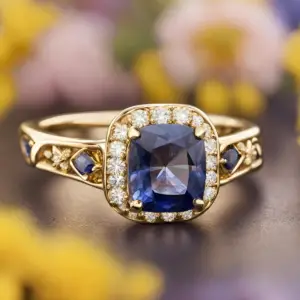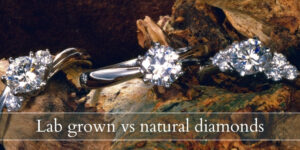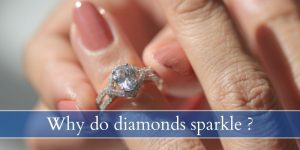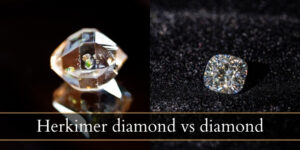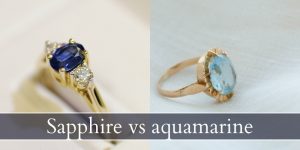Opals are beautiful, mystical stones that have fascinated us humans for centuries with their color play. Some opals have muted color, and some are absolutely brilliant. If you’re planning on proposing with an opal, or would like an opal engagement ring, then you may be wondering what is the meaning behind this stone. Let’s take a look, and explore all the options you have for an opal engagement ring.
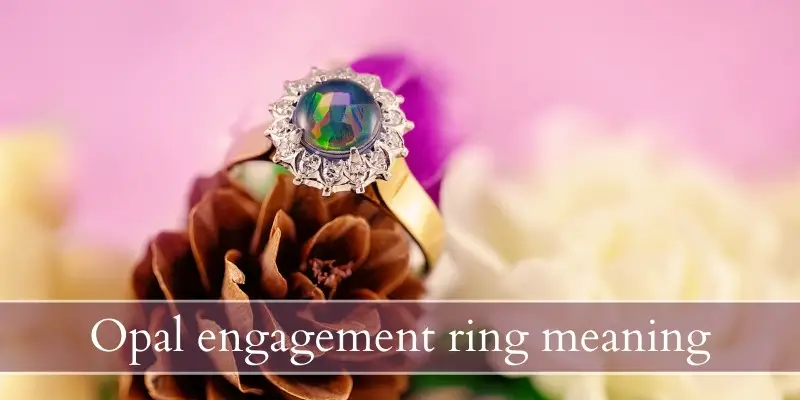
Opal engagement ring meaning
Opals in engagement rings are meant to symbolize the couple’s love and faithfulness to one another, and to bring protection. The protections stems from an old belief that the opal reflects all the colors of the cardinal gems, and thus brings all the protection those gems would bring. There is also an element of luck associated with the color play of opal, again referring to the many gems it echoes.
The chief meaning of opal is always tied to love and fidelity, and this has been a longstanding belief since the middle ages. Some legends say that knights and sailors would give opals to their wives when they left on a long journey. If the opal were to lose its fire, it’d mean the wife had been unfaithful.
Other legends claim that ancient kings game opals to their views to bring them luck, and keep them safe from plots against their lives.
Whatever the case, opals have always been associated with love, faithfulness, and luck. In an engagement ring it’s possibly one of the most romantic and intense gems you can wear.
What are opals ?
Opals are a hydrated form of silica, and a good option of their composition is pure water, usually in the 6-10% range. Opals are not classed as crystals, since they don’t grow in a specific shape or with a specific structure. This is what makes opal vary so wildly in color and fire.
The fire in an opal is actually light reflecting off tiny spheres of silica. The sphere are packed very tightly together and arranged in a sort of lattice structure, which leads to different colors appearing when you turn the opal in your hand.
The body of an opal may come in different colors and different levels of opaqueness. Some may be perfectly clear, some may be hazy, and some are 100% opaque.
Read also: What Is Rutilated Quartz ?
Is it bad luck to wear opal for an engagement ring ?
Opal does not bring bad luck, as it’s considered rather a protection stone than anything else. There is a side of opal that many people don’t know: this is a fragile stone that needs extra love and care in order to not chip or break. When opals were first discovered this was not known, so improper opal care led to some very unfortunate rumors about opals, that later turned into myths. Here are a few examples.
Some legends and myths claim that it’s bad luck to wear an opal as an engagement ring, as the woman will soon become a widow. Other legends claim you should never buy an opal, only receive it as a gift, otherwise you will have bad luck. Yet another myth claims that you can ruin your marriage by wearing an opal since it will bring misdirected lust and passion.
There is no truth behind these myths, since these can happen with any gemstone. You can wear an opal on your engagement ring if you think it’s a beautiful stone, and channer the positive energies it comes with.
Is opal good for engagement rings ?
Opal is a great choice for engagement rings as it offers a very unique color play and is definitely a non-traditional center stone. No two opals are alike, since each and every opal is unique. Opals come in different colors, and the shifting fire within them is sometimes muted, sometimes bright.
Can you wear opal every day ?
We don’t recommend wearing opal every day as it is a softer stone that can easily scratch or break, The Mohs rating for opals is 5-6 out of 10, which makes them quite soft. This means they are not fit for everyday wear, as only stones above 7 on the scale are durable enough to survive without many scratches or chipping.
Opals are good for occasional wear, or better yet worn as earrings or pendants since these are safer. If you want to wear an opal ring, be sure to remove it before swimming, doing housework, going to the gym, doing gardening, or in any place you know you might hit it against something by mistake.
You should also be very careful to not subject opals to moisture, such as sweat, water, lotion, perfume, saliva, and so on. This is because opals have a good amount of moisture already in them. Raising that moisture level will dull the fire within them. The good news s that leaving the opal in a dry place will usually restore it to its original color, but this only works if it was subjected to clean water.
Is opal expensive ?
Opal can be both affordable and expensive, as it can range from $50 all the way to $1500 per carat. The reason behind this insane price range is that opals vary wildly from one to another, in terms of body color, color play, brilliance, and faults within the stone.
The most prized opals are black opals, which does not necessarily mean the body is black, but rather it has a very dark color that makes the fire within the opal stand out. White or very light colored opals do not contrast with the fire as much, so they are cheaper.
Color brilliance is another important aspect, as the fire can be dull bright, or brilliant. And the entire appeal of an opal lies within its color play, so this can be a bigger factor than the body color. So for an example a dull black opal is worth less than a bright white opal, and both as worth less than a brilliant Mexican fire opal.
As for faults like sand, cracks, webbing, clear patches and the like, they can render any piece of opal worthless.
This is why no two opals will have the same price point, even if they are of similar weight and body color.
What is the right cut for an opal ?
An opal displays its colors best as a low cabochon. A high cabochon is going to be exposed and thus crack and chip much easier than a low cabochon. Faceted cuts are not common for opals, since they don’t help with color play. In the case of very clear opals (rare) you may find some faceted cuts, and those would be some amazingly expensive opals because:
- they’re both clear and offer very brilliant fire
- as a faceted cut they can turn into a kaleidoscope
But for most opals, a cabochon is the best cut. Opals are almost always opaque, or at least not clear enough to warrant a faceted cut.
What metal pairs best with opal ?
Hard precious metals are a great option for opal because they keep the opal protected, taking the brunt of any strike or hit. For this reason we recommend 14k gold, 18k gold, or platinum. We don’t recommend silver as it’s a bit softer than the other metals and may dent easier. And you need a very strong metal to protect your opal.
In terms of color, there is not right or wrong option when it comes to opals. Yellow, white, and rose gold are all amazing options and would make for a very beautiful ring.
What is the best setting for an opal ?
Bezel settings are the best for opals as they offer the most protection. A bezel setting is a metal bands that goes all around the sides of the opal, protecting it from most accidents. When paired with a low cabochon, the opal has a higher chance of surviving without too many scratches.
You can make a bezel set opal more appealing with a white gemstone halo, be it diamond, moissanite, CZ, topaz, or sapphire. Add a bit of detail with some bead work around the ring and you’ve got a very impressive engagement ring.
Prong settings are not recommended, as they can leave the opal exposed. You can compromise by asking for a prong setting with short prongs, but many prongs. So instead of the classic 4-6 prongs, go for 8 to 12 shorter ones that act as a sort of buffer between the opal and anything it might hit.

I’m the main author for jewelrymaterialguide.com. I started this site after we did tons of research before our wedding and noticed that there is information about rings, jewelry, and so on that is really hard to find on the internet.

